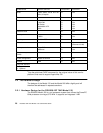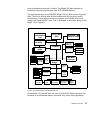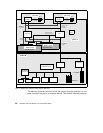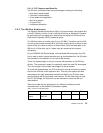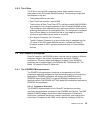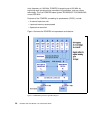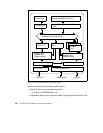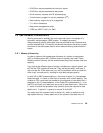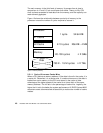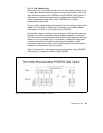
34 RS/6000 43P 7043 Models 150 and 260 Handbook
2.3.3 The 60X and 6XX Bus
The 60X bus was designed to provide a common interface that supplies
communication between processors, memory controllers, and high-speed I/O
devices. Arbitration on the bus is performed by a central, off-chip arbitrator.
The 60X bus provides the capability to build an SMP system with the MESI
protocol. This bus is also known as the MP System Bus.
The 60X bus uses separate address and data buses and a variety of control
and status signals. The address bus is 32 bits wide (with 4 bits parity) and the
data bus is 64 bits wide (with 8 bits parity). These separate address and data
buses run independently, allowing split transactions. The bus is synchronous,
with all timing relative to the rising edge of the bus clock. Inputs are sampled,
and outputs are driven from this edge.
It is through this bus that the two-way SMP’s processors are attached,
memory is accessed, and cache snooping is achieved.
2.3.4 The 6XX-MX I/O Bus
The 6XX-MX I/O bus is a high-performance bus designed to be used as a
high-end I/O bus for mid- and high-range systems. It will accommodate both
32- and 64-bit processors with real memory addressing extending beyond 32
bits.
The requests and replies are tagged, allowing for out-of-order replies, which
are common for programmed I/O to another bus or in a non-uniform memory
access (NUMA) environment.
This bus must have a bridge chip to translate a 6XX or 60X transaction with
the corresponding operation. Due to the 66 MHz PCI capability as defined in
the PCI Local Bus Specification (Revision 2.1), local bus performance has
increased from 264 MB/s to 528 MB/s for 64-bit transfers.
Data Bus 64 64 8 16 16/32
Address Bus 32 64 20 24 24/43
Bus Clock 66 MHz
83 MHz
100 MHz
33 MHz
(32-bit)
4.7 MHz 8.3 MHz 8.3 MHz
Interrupts 4 6 11 11
DMA Channel busmaster 3 7 7
Specification PowerPC PCI ISA(8) ISA(16) EISA



